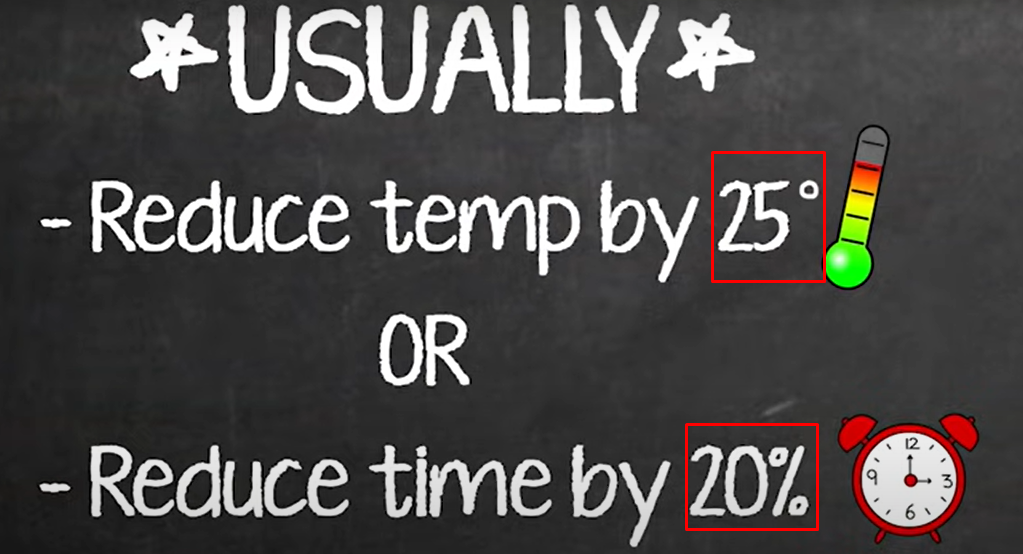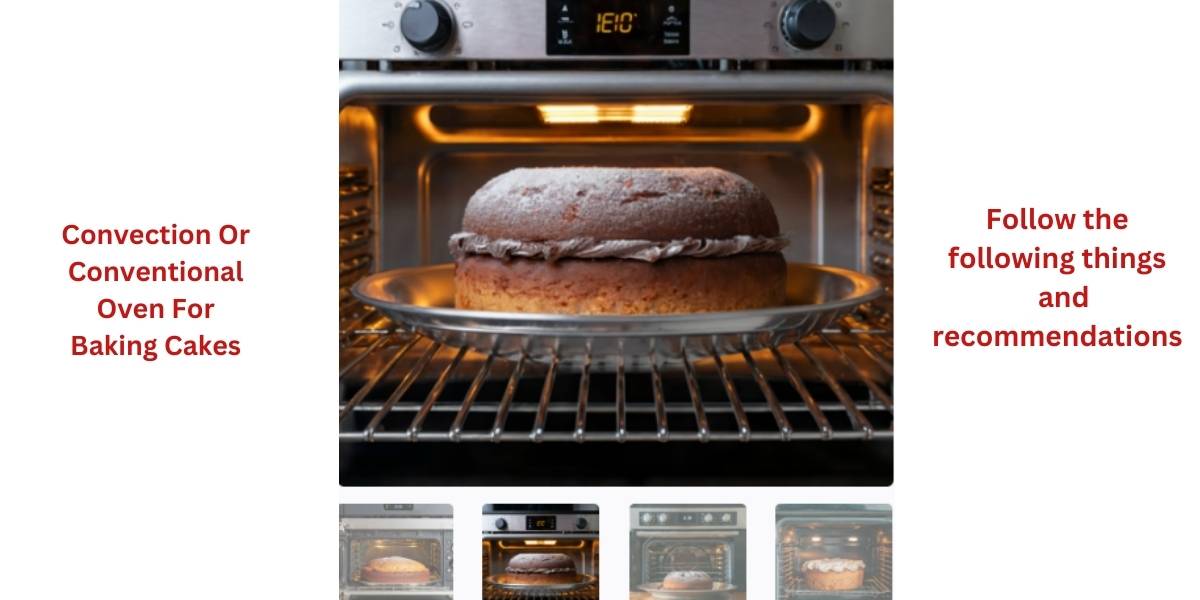As a kitchen specialist, I, Tammy E. Edison this is important to note that when it comes to baking cakes, there are two primary types of ovens that are commonly utilized: convection ovens and conventional ovens. Ah, the eternal query that plagues many a baking enthusiast – which tool shall we wield in our quest for the perfect cake?
Convection ovens boast a remarkable feature – a strategically placed fan that diligently circulates the scorching air throughout the cooking chamber, thereby facilitating the culinary process. In a convection oven, the culinary magic happens at an accelerated pace due to the enhanced circulation of hot air. This swift movement of air ensures that your delectable creations are cooked with remarkable efficiency, resulting in reduced cooking times.
However, traditional ovens typically lack the presence of fans. This implies that the absence of proper heat circulation may lead to an inconsistent cooking outcome. However, it is widely held in culinary circles that traditional ovens yield superior outcomes when it comes to specific cake varieties, particularly sponge cakes.
When it comes to the art of baking a delectable cake, selecting the appropriate oven is of utmost importance. May I kindly guide you through this culinary journey? The response may vary based on the specific variety of cake you are preparing. Continue reading to acquire further knowledge regarding the distinctions between convection and conventional ovens. Furthermore, allow me to provide you with expert guidance on choosing the perfect oven for your delectable cake.
Convection Or Conventional Oven For Baking Cakes: My Experiences
In the culinary realm, amidst the picturesque landscape of undulating hills, a budding artisan of the oven by the name of Emilia resided. Once I talked to her, she told me a story like the following. Emilia’s deep passion for baking was as intense as the comforting ambiance of her inviting kitchen. Every moment of her culinary journey was immersed in the delightful aromas of vanilla, the alluring fragrance of bread fresh out of the oven, and the blissful mirth of those fortunate enough to savor her delectable masterpieces.
The treasured recipes sparked Emilia’s culinary journey, passed down from her beloved grandmother, igniting a fiery passion for the art of baking within her. Under the careful guidance of her grandmother, she acquired the mastery of crafting elaborate cakes, exquisite pastries, and artisanal breads, each requiring a meticulous touch and a discerning eye. Nevertheless, one aspect piqued Emilia’s interest—an enigmatic puzzle she yearned to decipher: the influence of various ovens on her cherished culinary creations.
With a resolute glimmer in her gaze, Emilia set forth on a culinary expedition to delve into the divergent domains of ovens. She procured both a traditional and a contemporary convection oven, each possessing its unique appeal and magnetism.
She fastidiously crafted uniform cake batters in her delightful culinary haven—specifically, a decadent chocolate cake batter. With utmost precision and meticulousness, our esteemed culinary expert deftly distributed the luscious batter evenly and harmoniously between the two pans, ensuring a symphony of flavors in each delectable creation. One pan was gracefully nestled inside the traditional, time-honored conventional oven, while the other found its rightful place within the state-of-the-art convection oven, where culinary magic awaits. As the delectable aroma of rich, velvety chocolate wafted through the atmosphere, an air of eager anticipation began to permeate the surroundings.
As the minutes gracefully passed, Emilia eagerly gazed through the oven door’s transparent glass, marveling at the enchanting metamorphosis. The traditional oven exuded a gentle and comforting warmth, enveloping the delectable cake in a familiar and cozy embrace. In culinary endeavors, the convection oven’s fan gracefully spun, conducting a harmonious symphony of scorching currents enveloping the delectable cake.
The melodious chime of the timer resonated through the culinary domain, gracefully announcing the culmination of the exquisite baking expedition. With utmost precision, Emilia delicately retrieved the delectable cakes, their lustrous golden exteriors shimmering under the gentle glow of the kitchen illumination. With a keen eye, she meticulously inspected them, discerning the nuanced variations. The cake that emerged from the traditional oven showcased a consistent and impressive level of leavening, while its convection counterpart exhibited a flawlessly even and beautifully golden crust.
Emilia’s heart brimmed with anticipation as she skillfully sliced into the cakes, unveiling their delicate crumb and indulgent texture. The delightful moment of the taste test ensued as esteemed companions and neighbors congregated to relish the delectable cakes. Every single slice provided a truly delightful culinary journey—a perfectly moist and tender crumb achieved through the traditional oven method and an impeccably even bake achieved through the utilization of the convection oven.
In culinary exploration, Emilia embarked on a journey of baking enlightenment, unraveling the enchanting secrets concealed within the depths of both ovens. The traditional oven, renowned for its delicate temperature control, proved to be an ideal choice for those cherished recipes that truly appreciate its unwavering and reliable warmth. In contrast, the convection oven’s remarkable ability to distribute heat proved to be a game-changer in attaining flawlessly baked delicacies, particularly intricate pastries and multi-layered cakes.
Emilia’s culinary expedition amidst the realm of ovens has bestowed upon her the profound realization that each oven possesses its own unique narrative, and acquiring expertise in discerning their idiosyncrasies emerged as the pivotal factor in unraveling the enigmatic art of flawless baking. Armed with a wealth of knowledge, she embarked on her baking escapades, crafting gastronomic marvels that brought sheer delight to the palates of anyone who stepped foot into her domain.
Difference Between Convection And Conventional Ovens
A fan in a convection oven moves hot air around the food. On all sides, cook. But conventional ovens have a heating element at the bottom that heats the air that rises to cook the food. The convection oven is easy to use. But we have seen many people asking what is better convection or conventional oven? Actually, there are several “difference between convection and conventional ovens.”
Each type of oven has certain advantages and disadvantages. Though convection ovens cook food faster. But these can be more expensive. Besides the expensive – convention disadvantages”, have discussed in detail here.
Like the convection oven, the conventional has some disadvantages, such as: conventional ovens are cheaper, but they don’t cook food. And thy can not cook faster.
Which kind of oven is best for you, then? Your needs and tastes will determine.
Allow me to present to you a comprehensive comparison table elucidating the distinctions between the art of baking delectable cakes in a convection oven as opposed to a conventional oven:
| Aspect | Convection Oven | Conventional Oven |
|---|---|---|
| Heat Distribution | Uses a fan to circulate hot air evenly | Heat radiates from the top and bottom, can create hot spots |
| Temperature | Generally bakes at lower temperatures due to efficient heat distribution | Requires higher temperatures as heat isn’t as evenly distributed |
| Baking Time | Bakes more quickly due to even heat distribution | Longer baking times may be needed due to uneven heat |
| Browning | Provides more even browning on cakes | Uneven browning might occur, necessitating rotating pans |
| Rise and Texture | Often results in higher rise and more consistent texture | May have uneven rise or texture due to uneven heat |
| Pan Placement | Multiple pans can be used simultaneously without significant impact on baking | Limited number of pans for even baking due to uneven heat distribution |
| Best For | Ideal for delicate cakes, pastries, and cookies | Suitable for recipes that tolerate uneven heat or need higher temperatures |
When it comes to selecting the ideal oven for baking cakes, it is crucial to consider both the recipe at hand and the desired end result. When transitioning between the two types of ovens, it is important to consider making appropriate modifications to both the temperature settings and the duration of the baking process.
The Advantages And Disadvantages Of Each Oven
They have pros and cons, so it comes down to personal preference.
As we said above, convection ovens circulate hot air around the food. It cooks it and prevents it from drying out. It is the ideal option for baking cakes. Because it makes a moist and fluffy cake.
But traditional ovens don’t blow hot air everywhere. Food is prepared using radiant heat. This occasionally causes an uneven bake. That’s why many people prefer to use convection or conventional oven for baking cakes. But, conventional ovens are often less expensive and easier to use.
Which Oven Is Better For Baking Cakes–Convection or Conventional

Baking is a science and an art. But you can bake a cake in convection ovens easily with just simple steps.
When you bake a cake, you combine different ingredients in a certain way. And produces the desired result. The quality of your results and materials will depend on the accuracy of your measurements. It will also depend on the oven you use.
Two different kinds of ovens are used for baking – Which is, hence best for baking cakes? The answer is that it depends on the recipe you are using and your personal preference.
How to Bake a Cake Using a Conventional Oven
First, we’ll start with the essentials. For this recipe, you will need all-purpose flour, baking powder, salt, unsalted butter, sugar, eggs, and vanilla extract. You’ll also need a cake pan, an oven, a mixing bowl, a whisk, a rubber spatula, and a wire rack.
Keep in mind that the temperature of your oven is correct. Some the Temperatures will depend on the oven Rack Placement For Cakes. Because if your oven temperature is not right then uneven cooking will happen. So it is important to calibrate the oven. Do you know how to do this? No problem if you don’t know; we have a detailed and researched to calibrate your oven.”
However, You are prepared to begin baking once you have gathered all the necessary materials and equipment! Preheat your oven to 350 degrees Fahrenheit.

Next, you need to prepare your cake pan by greasing it with cooking spray.
Then, flour your pan and tap off the excess.
Now, you will start making the cake batter. Mix the salt, baking powder, and flour in a sizable mixing basin. In a separate bowl, cream the butter and sugar together until light and fluffy.
Then, blend the eggs and vanilla extract after adding them.
Let the cake cool entirely after baking before icing or serving. With a little care and attention, you will be able to bake a perfect cake using a conventional oven.
How to Maximize the Benefits of Convection and Conventional Ovens
When it comes to the realm of culinary appliances, both convection and conventional ovens possess their own unique set of advantages and limitations.
Here’s how to get the most out of each:
Ah, the wonders of convection ovens!
These marvelous appliances utilize a fan and exhaust system to circulate hot air evenly throughout the cooking chamber.
Embrace the fan: The pivotal element of convection lies in the presence of its circulating fan. Utilize this versatile tool to achieve optimal cooking results, particularly when preparing succulent roasts, delectable baked goods, and mouthwatering casseroles. By minimizing the occurrence of uneven heat distribution and optimizing the cooking duration, this technique results in succulent meats with a delightful, crispy outer layer.
Optimal shelf placement: To ensure optimal shelf placement, it is crucial to consider proper air circulation within the oven. It is advisable to refrain from overcrowding the oven, as this can hinder the free flow of air. When utilizing the fan-assisted oven, it is advisable to position your food slightly lower than a traditional oven.
This is due to the fan’s ability to generate an upward airflow, which can potentially affect the heat distribution. Engage in a culinary exploration by strategically adjusting the placement of your oven racks to achieve the utmost perfection in browning and cooking.
Moisture matters: Moisture is indeed a crucial factor to consider in the culinary realm. It is worth noting that the process of convection, while efficient in its ability to distribute heat, can have the unintended consequence of accelerating the drying out of food.
To achieve optimal moisture levels, it is recommended to incorporate a water-filled pan into the lower section of your oven or delicately spritz your culinary creations with water while they undergo the cooking process. This technique proves exceptionally advantageous when preparing delicate culinary creations such as fish or poultry.
Not For Everything: Convection may not be the most suitable option for all culinary endeavors. Delicate creations such as custards or soufflés, which heavily rely on the gentle and undisturbed application of heat to achieve their desired rise, might not be best suited for convection cooking.
In the realm of culinary expertise, it is worth noting that using an air fryer may not yield optimal results when dealing with delectable treats already endowed with a delightful crispness, such as cookies or crackers. A fan within the air fryer can potentially exacerbate the dryness of said treats, rendering them less palatable than desired.
Conventional Ovens
Master the preheat: Conventional ovens, also known as traditional ovens, are a staple in any kitchen. These versatile appliances utilize radiant heat to cook and bake.
Achieve culinary excellence: It is imperative to ensure that your oven reaches its optimal temperature before introducing any delectable ingredients. By implementing this technique, you can achieve a consistent temperature distribution, thereby mitigating any inconsistencies in the cooking process.
Baking stones or Dutch ovens: Employ baking stones or Dutch ovens, as they can retain heat and establish a uniform cooking atmosphere, thereby rendering them ideal for preparing delectable breads, pizzas, and succulent roasts.
Achieve optimal evenness: To ensure uniform cooking and prevent any side from becoming excessively cooked, rotating your food precisely at the halfway point of the designated cooking time is recommended. This is of utmost significance, particularly regarding culinary creations such as casseroles and sheet pan meals.
Tent for moisture: To prevent excessive moisture loss, employ a tried-and-true technique by gently enveloping your food with aluminum foil. This will create a protective shield, capturing and retaining the precious moisture. This technique is particularly beneficial for preparing roasts or casseroles requiring.
Baking stones or Dutch ovens: Employ baking stones or Dutch ovens, as they can retain heat and establish a uniform cooking atmosphere, thereby rendering them ideal for preparing delectable breads, pizzas, and succulent roasts.
Achieve optimal evenness: To ensure uniform cooking and prevent any side from becoming
excessively cooked, rotating your food precisely at the halfway point of the designated cooking time is recommended. This is of utmost significance, particularly regarding culinary creations such as casseroles and sheet pan meals.
Tent for moisture: To prevent excessive moisture loss, employ a tried-and-true technique by gently enveloping your food with aluminum foil. This will create a protective shield, capturing and retaining
the precious moisture. This technique is particularly beneficial for preparing roasts or casseroles requiring that required cooking.
Additional recommendation: Engage in culinary exploration! Both of these splendid ovens present an array of distinctive options. The rapidity of convection is ideal for preparing weeknight meals, whereas conventional ovens offer a more leisurely and classic culinary journey. Experiment with various culinary methods and gastronomic formulas to unveil the optimal approach that harmonizes with your unique kitchen inclinations.
When selecting the ideal oven for your culinary needs, it is crucial to prioritize your comfort and confidence in operating the appliance. By comprehending your ingredients’ inherent capabilities and limitations, you can unleash their utmost potential and craft delectable culinary creations consistently!
FAQs
Which Kind Of Oven Is Best For Baking Cakes?
Due to the fact that it is based on personal preference, this question cannot be definitively answered. Some people find that convection ovens give more consistent results. Others prefer conventional ovens for their simplicity. But, in general, convection ovens tend to be better for baking.
Do Professional Bakers Use Convection Ovens?
A fan that circulates the hot air within a stove is known as a convection oven. This circulating air helps cook food more and at a lower temperature. Many bakers find that convection ovens help prevent their pies and cakes from drying out. Many professional bakers are now using convection ovens with excellent results.
How to Bake a Cake Using a Convection Oven
Convection ovens are becoming popular in home kitchens. But there are still many people who are unsure about how to use them.
Convection ovens work by circulating hot air around the food, which cooks it on all sides. This differs from a regular oven, which heats the oven air and then cooks the food in that hot air.
One of the main advantages of using a convection oven is that it cooks food faster than a regular oven. Because hot air circulates, food is cooked.
Final Suggestions
In the realm of culinary expertise, it is imperative to acknowledge the merits and drawbacks of using either a convection or conventional oven when it comes to baking cakes. Regarding matters of taste, it ultimately boils down to individual preferences. If you seek expedited cooking durations and enhanced uniformity in your baking endeavors, then a convection oven is unequivocally the optimal choice.
If your culinary preferences lean towards a traditional oven’s timeless aesthetics and familiar ambiance, then the conventional option is undoubtedly the ideal choice for you. Regardless of the oven you opt for, rest assured that you can craft delectable cakes effortlessly, provided that you meticulously adhere to the prescribed recipe.
xvideos,
porn,
hentai,
porn,
xnxx,
sex việt,
Phim sex,
mp3 download,
MÚSIC MP3,
Define Npv,
hentai,
free porn xx,
Tom Life Insurance Review,
Is It Better To Pay Credit Card Before Statement,
Anime xxx,
phim xxx,
Free MP3,
phim xnxx,
Chinese Sex,
phim xxx,
xtube,
Ncl Trip Insurance,
gay brasileiro xxx,
sex,
BR sex,
xxx,
How Does Apple Music Voice Work,
Jav hd,
December In Washington Dc,
black horny old man eat pussy,
sexo forte,
Hot Topic Canada,
Craigslist Search All,
Hentai haven,
sex,

Tammy E. Edison is a distinguished specialist in the world of kitchen appliances, and she is proud to be a part of the dynamic team at kitchenusers.com. With a background in engineering and a passion for culinary innovation, Tammy E. Edison has established herself as a go-to expert for all things related to kitchen appliances technology.



3 thoughts on “Convection Or Conventional Oven For Baking Cakes”